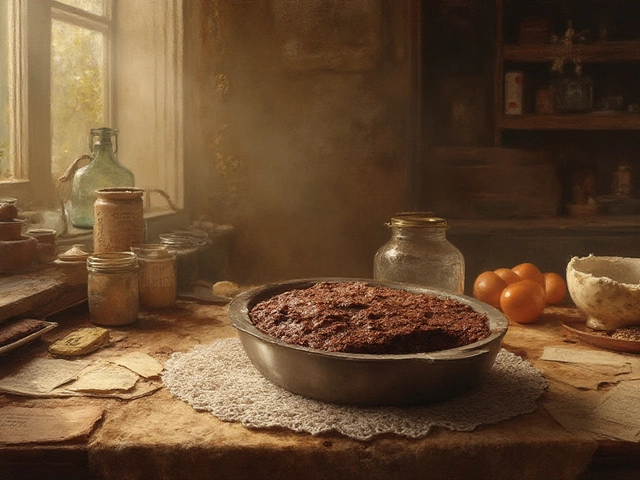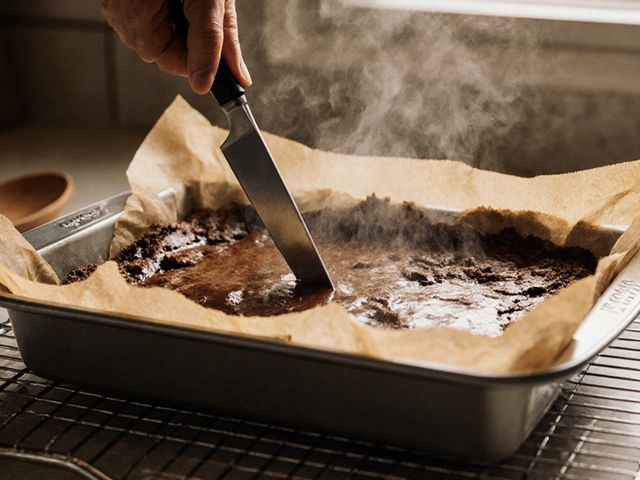Cook Fudge Temp: How to Nail the Perfect Temperature for Smooth Fudge
If you’ve ever ended up with grainy or too hard fudge, the culprit is usually the heat. Hitting the right temperature makes the difference between silky, melt‑in‑your‑mouth fudge and a rocky mess. Below you’ll get the exact numbers, tools you need, and a step‑by‑step guide that works for any classic fudge recipe.
Why Temperature Is the Game Changer
Fudge relies on sugar crystals forming at just the right moment. Too low a heat and the sugar never reaches the soft‑ball stage – the fudge stays runny and never sets. Too high, and the sugar moves past the soft‑ball stage into the firm‑ball stage, creating large crystals that turn the fudge grainy.
The sweet spot is usually between 115°F and 120°F (46°C‑49°C). This range is called the soft‑ball stage and it gives you that glossy, creamy texture that most people love. If you prefer a firmer, slice‑able fudge, you can push it to about 125°F (52°C), but stay clear of the 130°F‑140°F range where the fudge gets hard and crumbly.
Using a reliable candy thermometer is the easiest way to stay in that sweet zone. Clip it to the side of your pan, make sure the tip stays in the liquid, and keep checking as the mixture thickens. Digital thermometers give a quick read, while analog ones are cheap and work fine if you’re careful.
Step‑by‑Step: Cooking Fudge at the Right Temp
1. Gather your tools. You need a heavy‑bottomed saucepan, a candy thermometer, a wooden spoon, and a greased 8‑inch square pan.
2. Combine sugar, butter, and milk. Put all ingredients in the pan over medium‑low heat. Stir until the sugar dissolves, then stop stirring.
3. Bring to a boil. Once the mixture starts bubbling, increase the heat just enough to keep a steady boil. This is when the temperature will climb quickly.
4. Watch the thermometer. As soon as you see the thermometer hit 115°F (46°C), start timing. Keep the boil going for another 4‑5 minutes while you watch the rise.
5. Remove from heat at 115‑120°F. When the thermometer reads anywhere in that range, pull the pan off the burner. This is the moment the sugar hits the soft‑ball stage.
6. Cool without stirring. Let the mixture sit for about 5 minutes. During this time, a thin skin forms on top – that’s normal.
7. Beat the fudge. After the skin forms, start beating with a wooden spoon. You’ll see it thicken and turn a lighter color. Beat until it loses its gloss and becomes matte; this usually takes 2‑3 minutes.
8. Add vanilla and nuts. Stir in any flavorings, chopped nuts, or chocolate chips at this point.
9. Spread and set. Pour the fudge into the prepared pan, spread evenly, and let it cool completely at room temperature. Cut into squares once firm.
Follow these steps and you’ll consistently land in the soft‑ball stage, giving you creamy, melt‑in‑your‑mouth fudge every time. If you ever get grainy fudge, check two things: Did the temperature go above 125°F? Did you over‑beat after it turned matte? Adjusting those two variables fixes most problems.
Remember, the key to great fudge isn’t a secret ingredient – it’s mastering the cook fudge temp. Keep a thermometer handy, stay within 115°F‑120°F, and enjoy smooth fudge that impresses friends and family alike.

Fudge Temperature Guide: The Exact Soft‑Ball Stage and How to Hit It Every Time
Wondering what temperature to cook fudge at? Get the exact soft-ball range, quick fixes, altitude adjustments, and a simple step-by-step to nail creamy fudge.
View More




